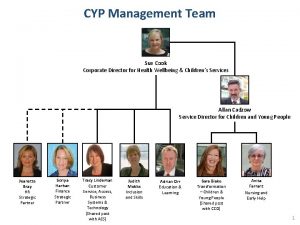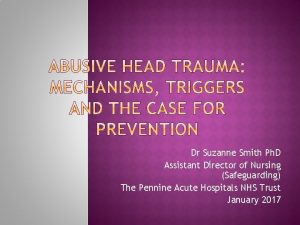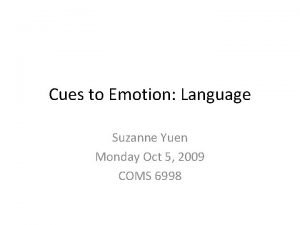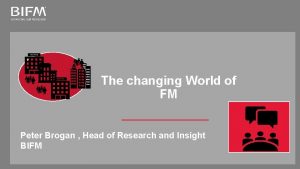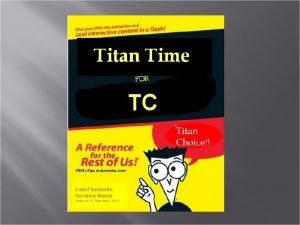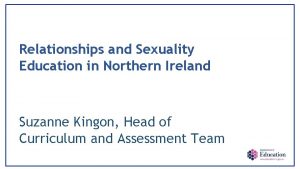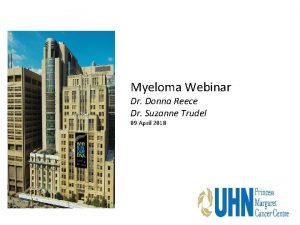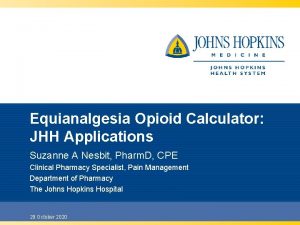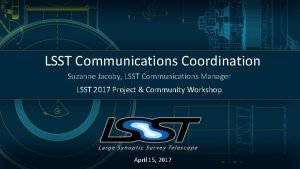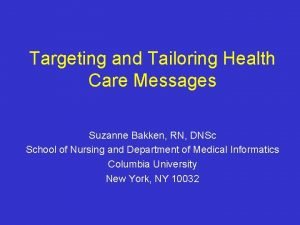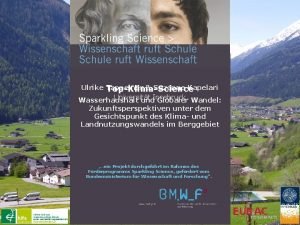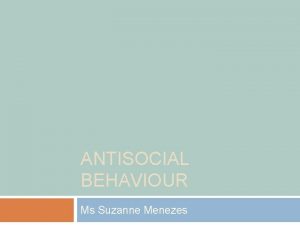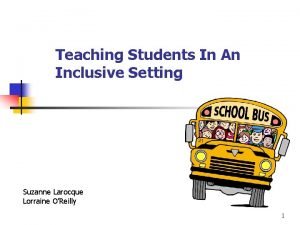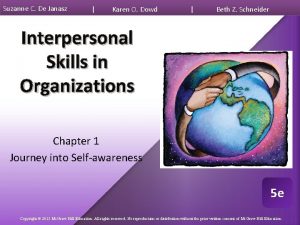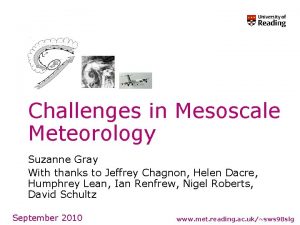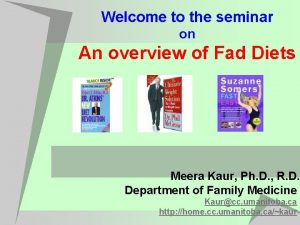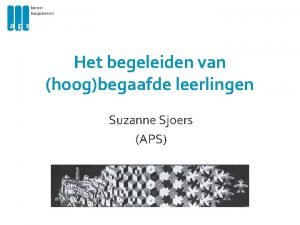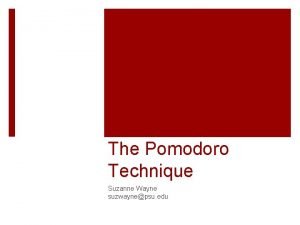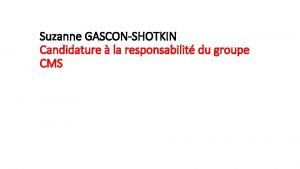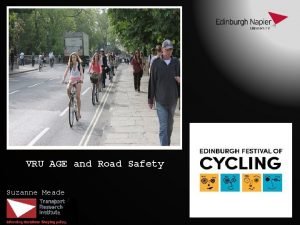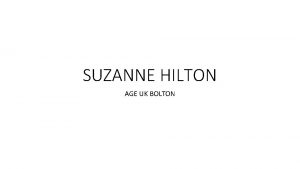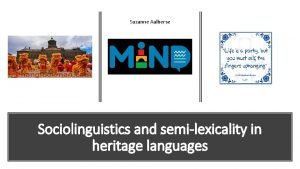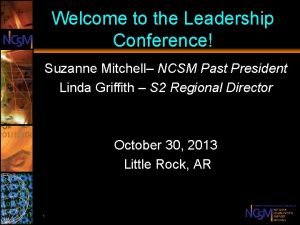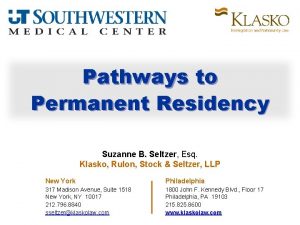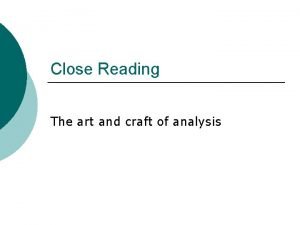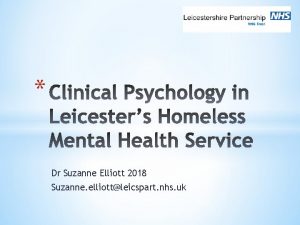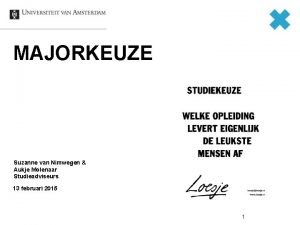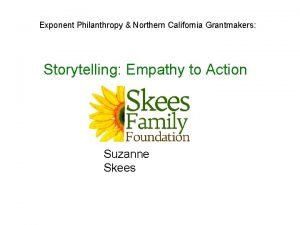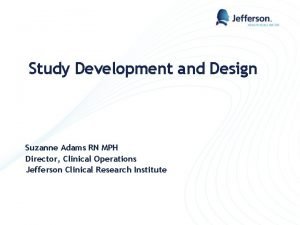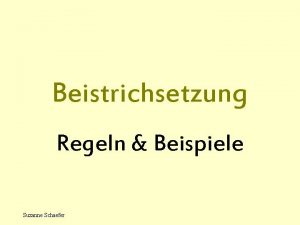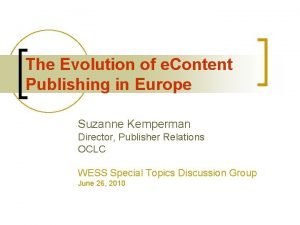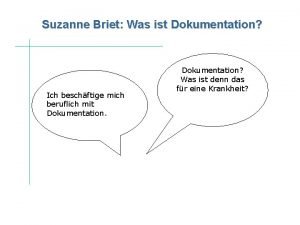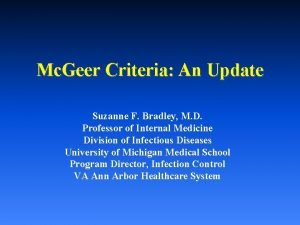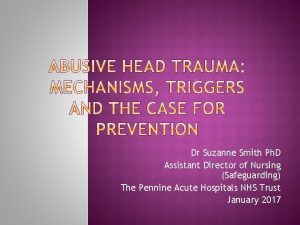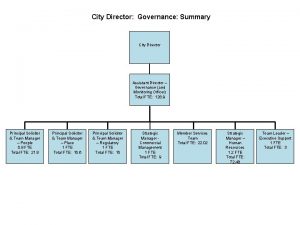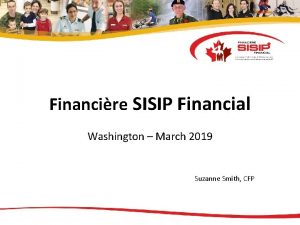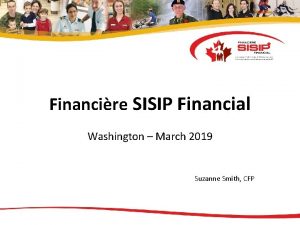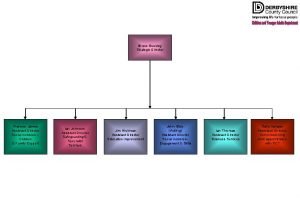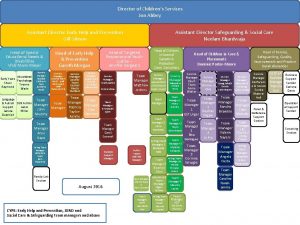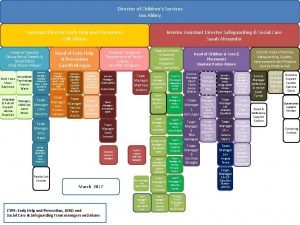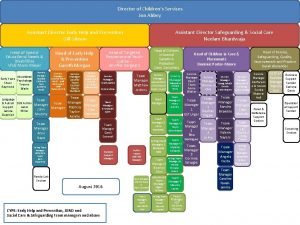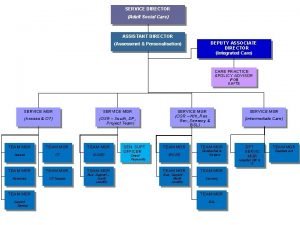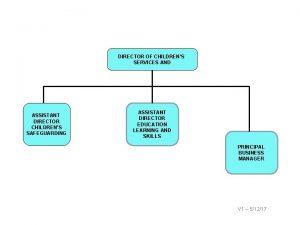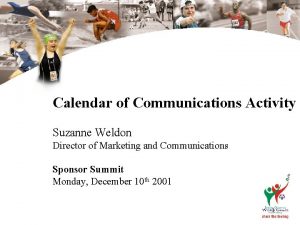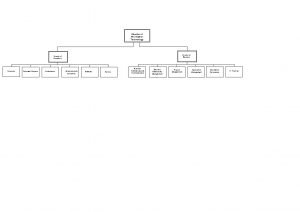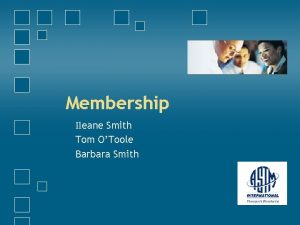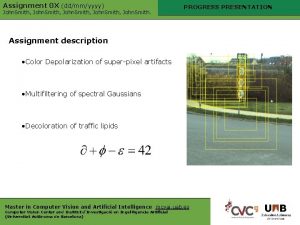Dr Suzanne Smith Ph D Assistant Director of



















































- Slides: 51

Dr Suzanne Smith Ph. D Assistant Director of Nursing (Safeguarding) The Pennine Acute Hospitals NHS Trust January 2017

COPING WITH CRYING: APPROACHES TO PREVENT ABUSIVE HEAD TRAUMA Suzanne Smith and Robin Balbernie 09. 15 - 09. 30 Registration and refreshments 09. 30 – 09. 45 Welcome and introduction 09. 45 – 10. 15 Describing Abusive Head Trauma (AHT) and triggers. 0. 15 – 11. 15 Breaking Point: Why We Snap. 11. 15 – 11. 30 BREAK 11. 30 - 12. 00 Impact on children, families and society: the case for prevention 12. 00 – 12. 15 Designing a prevention campaign 12. 15 – 13. 00 Bringing over there over here: findings from across the pond. 13. 00 – 13. 20 A Multi Agency Public Health Approach to Prevention. 13. 20 – 13. 30 Questions and Close.

� AKA Shaken Baby Syndrome � Child Abuse � Catastrophic injuries: � intracranial injuries � Retinal haemorrhages � Bony injuries � Causal mechanism rarely � Acceleration/deceleration � Impact � 1 confirmed in 14 cases – fatal before hospital discharge � Half of severely injured survivors die before aged 21. � VIDEO

� 2000 24. 6 per 100, 000 in first year � 200826 per 100, 000 in first year � 201120 – 24 per 100, 000 in first year � DGH – paediatrician can expect to see a case every 1 or 2 years. � PAT – approx 2+ cases in one year (5 in 2 years) � 2. 6% of American parents admitted to shaking a child under 2 years � 9% felt like shaking. � Cases seen by paediatricians – only a proportion of cases of AHT. � It’s the leading cause of death and long-term disability for babies who are harmed

� 70% perpetrators are males. � Can occur in every socio-economic group. � Kesler (2008) Both mothers and fathers were often Africa American and fathers more often Hispanic. Mothers more often smoked in pregnancy, sought ante-natal care late and how birth weight babies. � CAUTION: these families are more likely to be reported for AHT (or conversely, families conforming to other demographics are less likely to be reported). � Jenny et al (1999) found that ‘missed’ cases of AHT more frequently involved ‘intact’ and ‘Caucasian’ families

� Infant crying � Poor sleeping patterns � Includes reduction in coping ability � Poor parent/child interaction � Reduction in selfesteem � Exhaustion � Frustration and anger

� Stress is seen as an especially prominent antecedent in violence towards children. � Background or environmental stressors such as noisy environments and in particular, uncontrollable noise. � A crying baby can be described as uncontrollable and its effects on parents and caregivers can be powerful. � Crossing the line between legitimate and non -legitimate punishment seems to stem from a battle to cope beneath a constellation of stressors leading to frustration and anger.

� 70% of babies shaken are shaken by men � Coping with crying: Living on the edge. � Caregivers lose control and shake – baby stops crying. � Demonstrable relationship between the normal peak of crying and babies subject to AHT. � Increase in cases of 1 st month of life, a peak at 6 weeks during 2 nd month and a decrease during the 3 rd to 5 th months of life.



� Success depends on controllability � Problem solving where the stressor cannot be controlled can lead to frustration and distress. � support through the problem rather than solving the problem � The need for a careful approach towards a responsive professional intervention that is rooted in evidence is, therefore, crucial.

The literature on the subject of parental coping draws attention to the need for parenting education and support about what is 'normal’ and the professional response to which should be ‘universal’. The stress of a crying baby, which every parent/caregiver will experience as the increase in infant crying is normal, can impact on parenting ability and can have a potentially negative impact on child welfare.

Robin Balbernie


� Survival with significant brain injury or death. � Emotional cost. � Inpatient hospitalisation (PICU) � Long term medical services – � Physio � OT � SALT � Educational � Foster needs care � Family and criminal proceedings � Prison/probation � SCR cost � Loss of societal productivity and occupational revenue.

Peterson et al (2014) assessed 1209 patients with AHT and 5895 matched controls. � Approximately 48% of patients with AHT received inpatient care within 2 days of initial diagnosis, and 25% were treated in emergency departments. � AHT diagnosis was associated with significantly greater medical service use and higher inpatient, outpatient, drug, and total costs for multiple years after the diagnosis. � The estimated total medical cost attributable to AHT in the 4 years after diagnosis was $47 952 per patient with AHT (2012 US dollars). � Children continue to have substantial excess medical costs for years after AHT. These estimates exclude related nonmedical costs such as special education and disability that also are attributable to AHT. �

� Charlie’s Story � Troy’s Story

� Travel to Learn: Return to Inspire � The aim of this Fellowship was to explore international programmes related to the prevention of child maltreatment with a particular focus on AHT in infants and to gain an understanding about the wider context of the delivery of care and the systems and processes in which they are provided and commissioned.

� � � SEEK (Safe Environment for Every Kid) Baltimore, Maryland Shaken Baby Syndrome Prevention Programme Hershey, PA Safe Babies New York Buffalo, NY Period of Purple Crying Vancouver, BC Period of Purple Crying and Child Advocacy Centre Helena, MT Period of Purple Crying and Family Support Centre Wichita, KS

� No co-ordinated prevention campaign. � NSPCC coping with crying: � The film is shown to parents by professionals or volunteers who work with babies such as midwives, maternity support workers, health visitors and children’s centre workers. � After watching the film, parents receive a leaflet with more information. � Results from our research show the Coping with Crying programme is helping to keep babies safe. Parents who have seen the film are more likely to react positively towards their baby’s crying and feel confident seeking help and support when needed. � However, message is ‘Babies cry for a reason – you just have to find it’. children-and-families/coping-with-crying/ https: //www. nspcc. org. uk/services-and-resources/services-for-

�Child abuse is a public health issue. �AHT prevention messages clearly aligned to PH levels of prevention. �Primary �Secondary �Tertiary �Add ‘supportive’ as a level.

WHERE ARE YOU?

GROUP WORK

A practical evidence-based tool to briefly and systematically screen parents for prevalent psychosocial problems that are risk factors for child maltreatment, and that generally jeopardize children's health, development and safety. Parental Depression � Parental Substance Abuse � Harsh Punishment � Major Parental Stress � Intimate Partner Violence � Food Insecurity � The SEEK PQ is also: Designed to screen for, not diagnose, risk factors for child maltreatment. It is Validated for use in primary care practice and is intended for parents to complete, voluntarily, in advance of their child's regular checkup.

�http: //theinstitute. umaryland. edu/frames /seek. cfm �http: //media. wix. com/ugd/77 e 10 d_7 deaa 9 c 956404 e 16 b 3 a 094 b 19977 c 657. pdf

Dear Parent or Caregiver: Being a parent is not always easy. We want to help families have a safe environment for kids. So, we’re asking everyone these questions. They are about problems that affect many families. If there’s a problem, we’ll try to help. Please answer the questions about your child being seen today. If there’s more than one child, please answer “yes” if it applies to any one of them. This is voluntary. You don’t have to answer any question you prefer not to.

PLEASE CHECK □ Yes □ No Do you need the phone number for Poison Control? □ Yes □ No Does anyone smoke tobacco at home? □ Yes □ No to buy Do you need a smoke detector for your home? In the last year, did you worry that your food would run out before you got money or Food Stamps more? □ Yes □ No bought just to get In the last year, did the food you not last and you didn’t have money more? □ Yes □ No difficult to Do you often feel your child is take care of? □ Yes □ No hit/spank Do you sometimes find you need to our child?

□ Yes child? □ No Do you wish you had more help with your □ Yes □ No Do you often feel under extreme stress? □ Yes □ No In the past month, have you often felt down, depressed, or hopeless? □ No In the past month, have you felt very little interest or pleasure in things you used to enjoy? □ No In the past year, have you been afraid of partner? □ No In the past year, have you had a problem with drugs or alcohol? □ No In the past year, have you felt the need to cut back on drinking or drug use? □ No Are there any other problems you’d like help with today? □ Yes your □ Yes Please give this form to the doctor or nurse you’re seeing today. Thank you!

SEEK resulted in significantly lower rates of child maltreatment in all the outcome measures: fewer Child Protective Services reports, fewer instances of possible medical neglect documented as treatment nonadherence, fewer children with delayed immunizations, and less harsh punishment reported by parents. Families with prior child welfare involvement were not excluded from the study sample, blending results for primary, secondary, and tertiary prevention (intervention) samples.


� Dose 1: hospitals and birthing centres � Dose 2: strategic reinforcement of the PURPLE message outside of the hospital � Dose 3: increase the opportunity for public awareness of AHT through a ‘positive community norms’ campaign on AHT. � Video

Hospital Based Prevention Programmes � http: //childrens. pennstatehealth. org/docum ents/11396217/11476368/2016+3 rd+Quarter+ Newsletter/db 2 cccdb-90 ff-45 c 0 -a 9177169 cbf 9362 f � Safe Babies New York (same model) http: //www. safebabiesny. com/wpcontent/uploads/2016/06/20160615053919_S afe-Babies-NY-Brochure-ENGLISH-FINAL-201601. pdf


�A co-ordinated, hospital based parent education programme targeting parents of all newborn infants can significantly reduce the incidence of abusive head trauma in children less that 36 months. Dias et al (2005) Preventing Abusive Head Trauma Infants and Young Children: a hospital based prevention program Pediatrics 115: 470 – 477 � 16 infants who were born in the 8 year study period were treated at the children’s hospital for shaking injuries sustained during their 1 st year of life. Of those infants 14 were born during the 5 year control period and 2 during the 3 year post implementation period. The decrease from 2. 8 injuries/year to 0. 7 injuries/year represents a 75% reduction (P=03). Altman et al (2010) Parent Education by Maternity Nurses and Prevention of AHT.

Although the frequency of SBS cases decreased, it is not possible to be absolutely certain that the educational programme was the cause of the decrease. Uncertainty about the cause and effect relationship is an inherent limitation of before/after study design, but the absence of changes over time in 3 nearby states without similar prevention programmes lends support to a cause/effect interpretation. � Fathers and male surrogates are nearly 5 times as likely as mothers to shake an infant. From the parents surveyed only 40. 4% of fathers watched the educational video. Finding better ways to reach male caretakers should be a priority. � Altman et al (2010) Parent Education by Maternity Nurses and Prevention of AHT.

� The primary aim of this study was to determine whethere was any change in visits of 0 - to 5 -month old infants to the medical emergency room (known as the Emergency Department in the UK) of a metropolitan paediatric hospital after province-wide implementation of a public health prevention program that teaches new parents about the properties of early crying in normal infants. After program implementation, crying cases were reduced by 29. 5% (p <. 001). The most significant reductions were for crying visits in the first to third months of life. The authors concluded that the findings imply that improved parental knowledge of the characteristics of normal crying secondary to a public health program may reduce MER use for crying complaints in the early months of life. Barr R G, Rajabali F, Aragon M; Colbourne M. , Brant R. , Education About Crying in Normal Infants Is Associated with a Reduction in Pediatric Emergency Room Visits for Crying Complaints J Dev Behav Pediatr 36: 252– 257, 2015





� Recommend a multi agency co-ordinated programme that touches on all the different levels of prevention. � Each ‘touch point’ is brief & can combine ‘safe sleep’ whilst reinforcing simple messages: � Infant crying is normal � Comfort methods will sometimes be able to sooth the baby and the crying will stop. � If the crying is getting to you, it’s OK to walk away when you have checked your baby is safe. � Never shake or hurt a baby.

� Fears that parents will become angry and feel accused � Fears of upsetting parents just after birth � Evidence – parents welcome education, small number of parents do not. � My research: the subject position that the message will offend is a professional construct.

Primary Prevention aligned with GM’s ‘Starting Well’. � School based education. � Hospital based intervention. � Postnatally by midwife message reminder. � HV birth visit message reminder. � HV team planned visit at 3 -4 weeks – Safe Sleep and Coping with Crying focused visit. � GP 6 week check: SEEK questionnaire. � Public health campaign. � Community Educators. � Fatherhood summits/cafes/parent cafes.

Reiteration of messages : � Identified stressors with families who have babies. � Opportunistic intervention by reactive agencies and ensuring messages are passed to caregivers. � Crying baby is already an established problem and families are sending out ‘coping alerts’ (HVs, GPs, EDs, Paediatric staff etc. . ) � Development of OOH crying baby helpline. � Volunteer/charity based parenting programmes � Contact sessions with babies

� Improved recognition and referral � Piloting of ‘clinical rules’ to indicate investigations at an earlier stage for babies attending with head injury/neuro symptoms. � Child Advocacy Centre/Family Support Centre provision

�Help for affected families – support groups, advocacy groups, bereavement services. �Peer educators.

�All professionals, volunteers, parent groups, peer educators who have contact with families with babies. �Access to brief elearning and materials.

� Impact on numbers of AHT victims – not completely reliable as an indicator of success. � Impact on numbers of parents/carers attending EDs with ‘crying baby’ – and no signs of illness. � Qualitative measures – parental reports, do they remember the message, have they recalled it/used the materials when they needed to etc. . � Look at the evidence base – there is a lot about!

� Endorsement/support from LSCBs/Children’s Trusts/partnerships, CCGs, Health and Well-being Boards. � Agree staged roll out of agreed elements of programme. � Identify change makers from each agency and key stakeholder organisations. � Establish a GM, multi agency including parents to codesign the detail of the campaign. � Consider the purchase of PURPLE to lift and shift to UK/consider alternative. � Approach Universities � Produce strategic plan including evaluation strategy and cost benefit analysis

� Infant crying is normal � Comfort methods will sometimes be able to sooth the baby and the crying will stop. � If the crying is getting to you, it’s OK to walk away when you have checked your baby is safe. � Never shake or hurt a baby.

 Assistant director vicky
Assistant director vicky Cyp assistant director
Cyp assistant director Dr suzanne smith
Dr suzanne smith Suzanne yuen
Suzanne yuen Suzanne brogan
Suzanne brogan Suzanne maxey
Suzanne maxey Dr suzanne mulder
Dr suzanne mulder Suzanne kingon
Suzanne kingon Suzanne van der woude
Suzanne van der woude Dr suzanne trudel
Dr suzanne trudel Opioid settlement calculator
Opioid settlement calculator Suzanne karaoke
Suzanne karaoke Suzanne jacoby
Suzanne jacoby Suzanne van wijk
Suzanne van wijk Suzanne paley
Suzanne paley Suzanne bakken
Suzanne bakken Suzanne kapelari
Suzanne kapelari Antisocial behaviour
Antisocial behaviour Suzanne larocque
Suzanne larocque Suzanne graw
Suzanne graw Meteorology
Meteorology Suzanne donaldson
Suzanne donaldson Suzanne sommers diet
Suzanne sommers diet Polis maa
Polis maa Suzanne staggs
Suzanne staggs Les roues de l'autobus suzanne pinel
Les roues de l'autobus suzanne pinel Dr suzanne parkinson
Dr suzanne parkinson Suzanne knop
Suzanne knop Suzanne sjoers
Suzanne sjoers Suzanne brogan
Suzanne brogan Suzanne wayne
Suzanne wayne Suzanne merlis
Suzanne merlis Suzanne gascon
Suzanne gascon Casualties
Casualties Hilton bolton uk
Hilton bolton uk Suzanne aalberse
Suzanne aalberse Ncsm membership
Ncsm membership Suzanne seltzer
Suzanne seltzer Ground zero suzanne berne
Ground zero suzanne berne La reine de beauté de suzanne prou
La reine de beauté de suzanne prou Dr suzanne elliott
Dr suzanne elliott Suzanne adair penn state
Suzanne adair penn state Ikea nimwegen
Ikea nimwegen Northern california grantmakers jobs
Northern california grantmakers jobs Author of hunger games
Author of hunger games Mistar pontiac
Mistar pontiac Dr suzanne adams
Dr suzanne adams Entgegengesetzte konjunktionen
Entgegengesetzte konjunktionen Suzanne kemperman
Suzanne kemperman Suzanne briet
Suzanne briet Suzanne bierman
Suzanne bierman Suzanne bradley
Suzanne bradley

